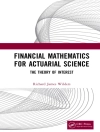This is a much-needed work in the financial literature, and it is the first book ever to analyse the use of Special Purpose Acquisition Companies (SPACs) from a theoretical and practical perspective. By the end of 2020, more than 240 SPACs were listed in the US (on NASDAQ or the NYSE), raising a record $83 billion. The SPAC craze has been shaking the US for months, mainly because of its simplicity: a bunch of investors decides to buy shares at a fixed price in a company that initially has no assets. In this way, a SPAC, also known as a ‘blank check company’, is created as an empty shell with lots of money to spend on a corporate shopping spree.
Could the trend be here to stay? Are SPACs the new legitimate path to traditional IPO? This book tackles those questions and more. The author provides a thorough analysis of SPACs including their legal framework and how they are used as a risk mitigation tool to structure transactions. The main objectives of the book are focused on finding a working definition for SPACs and theorising on their origins, definition, and evolution; identifying the objectives of financial regulation within the context of the recent financial crisis (2007–2010) and the one that is currently unfolding (Covid-19); and also describing practical examples of SPACs through a comparative study that, for the first time, outlines every major capital market on which SPACs are listed, in order to identify a possible international standard of regulation.
The book is relevant to academics as well as policymakers, international financial regulators, corporate finance lawyers as well as to the financial industry tout court.












